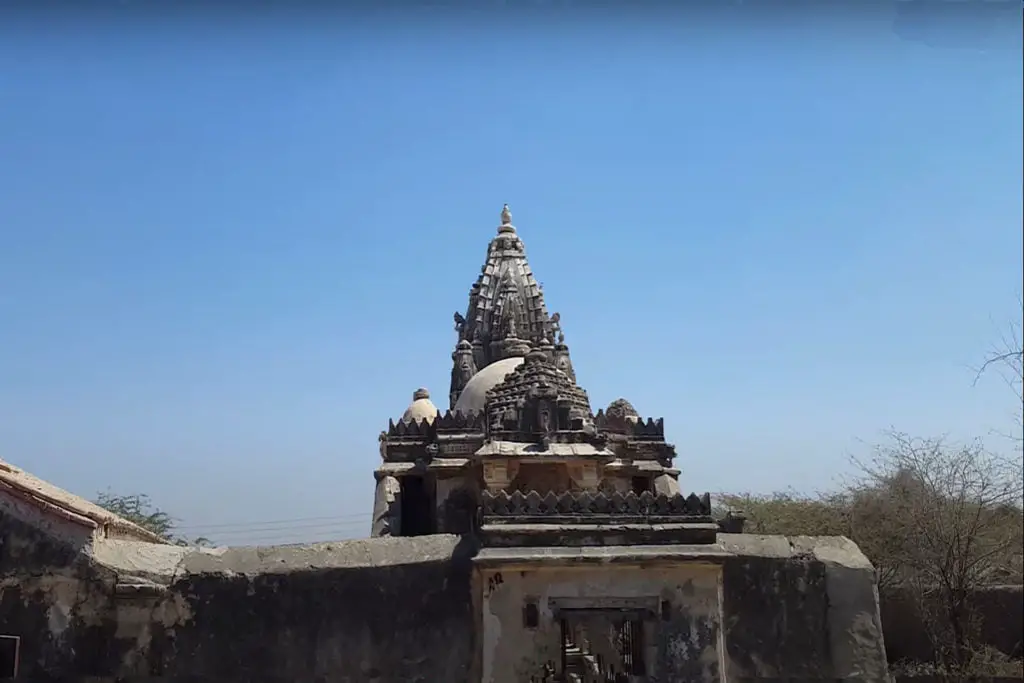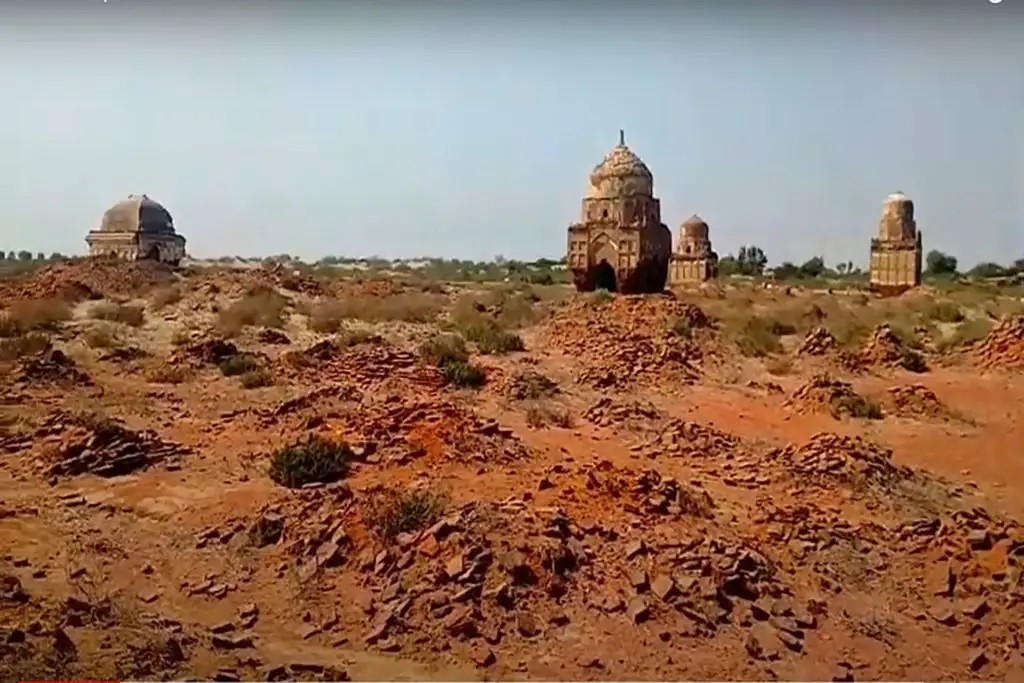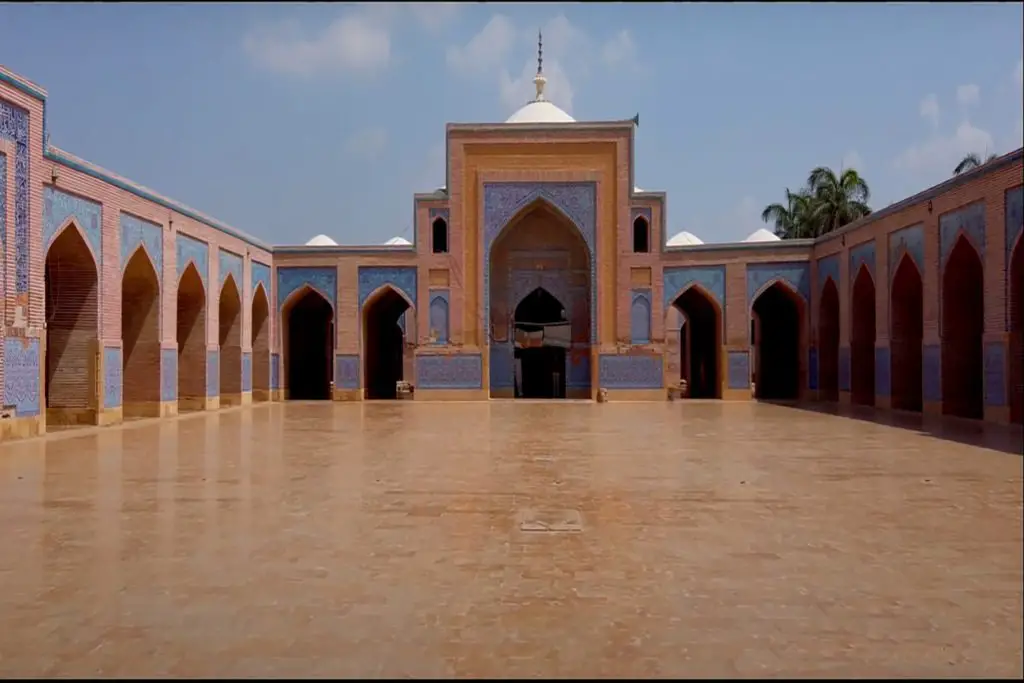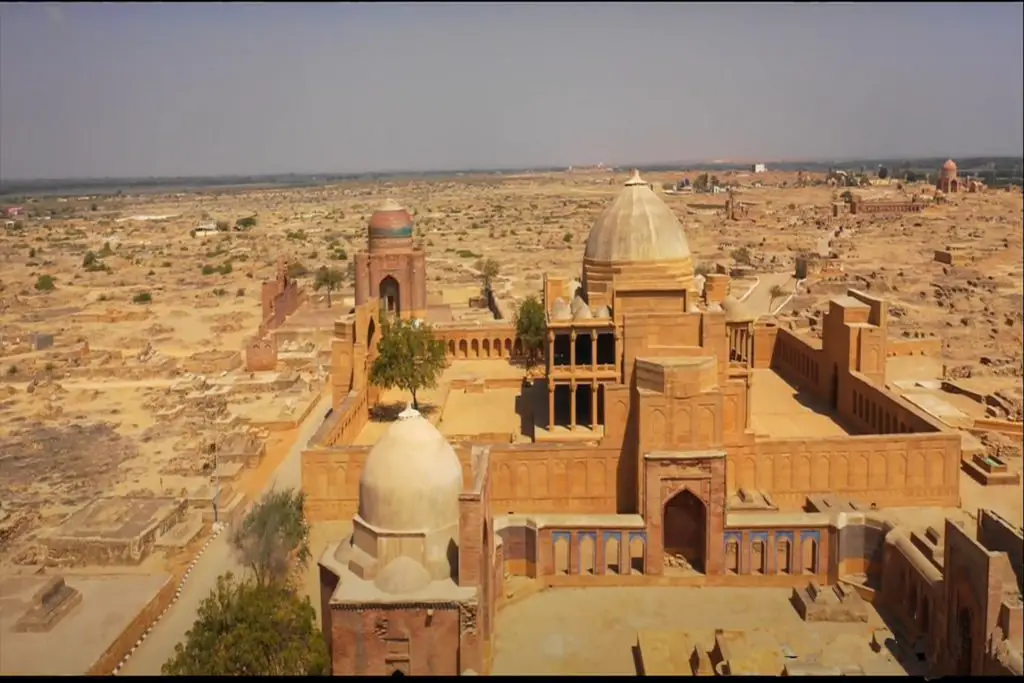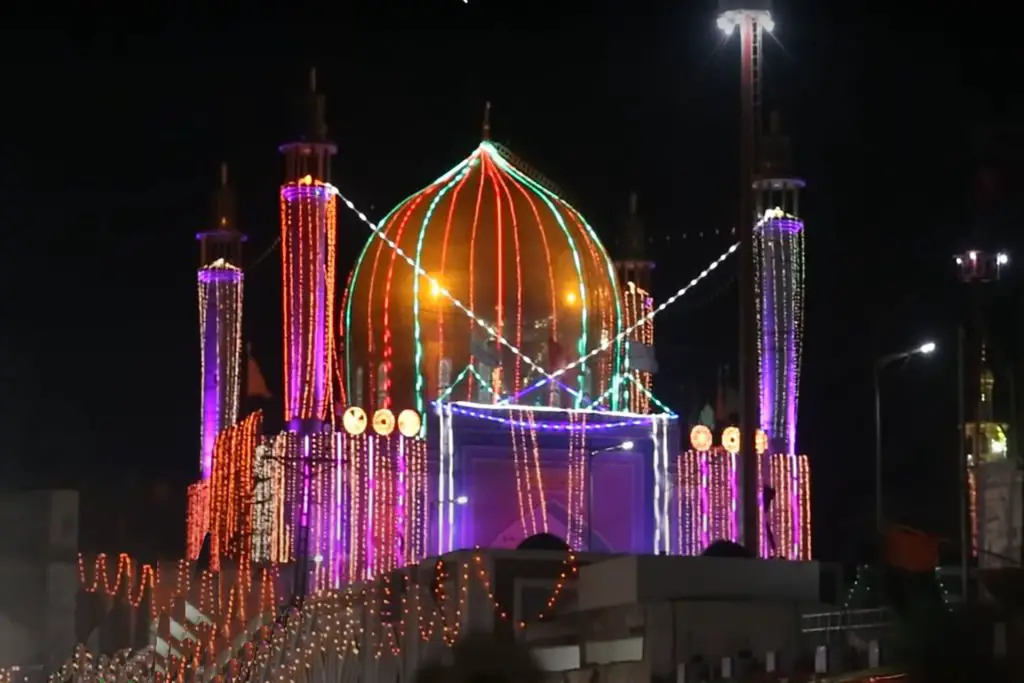The Nawab Ameer Khani Mosque is a beautiful and historic mosque located near the city of Thatta in the southern province of Sindh, Pakistan. Built during the 18th century, this mosque is a remarkable example of Islamic architecture and has been an important religious and cultural center for the local community for centuries.
The mosque was built by the ruling Nawab family of the region, who were known for their love for art and architecture. The Nawab Ameer Khani Mosque is one of the most impressive and elegant buildings constructed by the family, and it has become an iconic symbol of the region’s Islamic heritage.
Nawab Ameer Khani Mosque Location
The mosque is located in the village of Goth Abdul Hussain, which is about 25 kilometers from the city of Thatta. The structure is an imposing edifice, built with sandstone and adorned with beautiful carvings and intricate tile work. The mosque is divided into several sections, including a main prayer hall and a courtyard where worshippers can gather for communal prayers.

History of Nawab Ameer Khani Mosque
According to historical accounts, the mosque is attributed to the renowned Nawab Amir Khan, an esteemed Governor of Thatta during the era of Shah Jehan. This imposing structure stands as a testament to its builder’s vision and influence. Constructed primarily with sturdy square bricks, it boasts a grandeur enhanced by a Persian-style dome that crowns its structure. In its prime, the dome was adorned with a splendid array of white and light-glazed tiles, remnants of which still grace its surface.
The mosque’s exterior presents a massive square edifice, with one side measuring approximately 23 feet and 3 inches. At its center, a distinctive doorway stands as the sole entrance. Crafted from unglazed cut and rubbed red bricks, it captivates the eye with its alternating arrangement, creating a striking contrast with the light blue filling adorning the joints. This clever use of color serves as a prominent focal point, adding an artistic touch to the façade.
Inside the mosque, visitors are greeted with a breathtaking display of exquisite glazed tile work, showcasing the pinnacle of craftsmanship. Elaborate floral patterns grace the spandrels, evoking a sense of elegance and beauty. Throughout the interior, a series of panels showcase captivating geometric designs meticulously crafted on square tiles. These intricate patterns infuse the space with a harmonious blend of artistry and precision, offering a mesmerizing experience for those who enter.

The prayer hall of the mosque is the most impressive part of the building, with a high-arched roof, beautiful calligraphy, and intricate geometrical designs carved into the walls. The mihrab, a niche in the wall indicating the direction of Mecca, is also beautifully decorated with colorful tiles and calligraphy.
One of the unique features of the Nawab Ameer Khani Mosque is the central dome, which is supported by eight pillars and covered with beautiful blue and green tiles. The dome is a magnificent sight to behold, especially when it is illuminated at night, casting a magical glow over the surrounding area.
Apart from its architectural beauty, the Nawab Ameer Khani Mosque also holds great religious significance for the local community. The mosque is a center for Islamic education, and local imams regularly deliver sermons and lectures to the worshippers. The mosque also hosts various religious and cultural events throughout the year, including Eid celebrations, weddings, and other social gatherings.

Restoration of Nawab Ameer Khani Mosque Thatta
The Nawab Ameer Khani Mosque has been well-preserved over the centuries, with several restoration and renovation projects undertaken to maintain its original grandeur. The mosque has also been recognized as a significant historical site, and efforts are being made to ensure its protection and preservation for future generations.
In conclusion, the Nawab Ameer Khani Mosque near Thatta is a magnificent example of Islamic architecture and an important religious and cultural center for the local community. Its grandeur and beauty makes it a must-visit destination for anyone interested in the region’s history and culture. The mosque’s rich history and religious significance make it an integral part of the local community, and it continues to inspire awe and wonder among visitors from all over the world.

